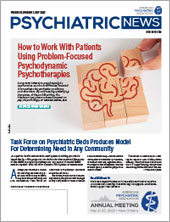Overdose deaths involving the veterinary tranquilizer xylazine, also known as “tranq,” are increasing in several parts of the country, a study in Drug and Alcohol Dependence has found. Fentanyl was present in nearly all of the overdose deaths involving xylazine in the study, and the two appear to raise the risk of overdose when taken together.
Joseph Friedman, Ph.D., M.P.H., a medical student and researcher at the University of California, Los Angeles, and colleagues examined qualitative data they had amassed through 15 years of fieldwork that began in 2007 as part of a study on urban poverty, violence, and illicit drug markets in majority Puerto Rican neighborhoods in Philadelphia. They also examined quantitative data from death records in 10 jurisdictions in all four major census regions in the United States.
The prevalence of xylazine in overdose deaths rose from 0.36% in 2015 to 6.7% in 2020. From 2019 to 2020, the prevalence of xylazine in overdose deaths jumped 44.8%. In 2020, xylazine was present in 25.8% of overdose deaths in Philadelphia, followed by 19.3% in Maryland and 10.2% in Connecticut. Xylazine-related overdose deaths also rose in Cook County, Ill.; Jefferson County, Ala.; Milwaukee; Harris County, Texas; and the state of New Hampshire, which suggests that xylazine use is spreading, although the absolute number of xylazine-related overdose deaths in these areas remained low.
“Xylazine use seems to be increasing exponentially wherever it lands and its geographic pattern is following in fentanyl’s footsteps, but with a 10-year lag,” Friedman told Psychiatric News.
Illicitly manufactured fentanyl was present in 98.4% of xylazine-related overdose deaths, cocaine was present in 45.4%, benzodiazepines were present in 28.4%, heroin was present in 23.3%, and alcohol was present in 19.7%.
Friedman said that xylazine seems to extend the length of fentanyl-induced euphoria, which most likely accounts for fentanyl’s presence in the vast majority of xylazine-related overdose deaths. Yet this very interaction raises and changes the risk of overdose death, he added.
“We’re used to giving people naloxone and having them fully revive, but with xylazine they often remain unconscious, which has implications for managing airways,” Friedman explained. “Xylazine acts like surgical anesthesia but where you can’t wake the person up. That leaves people vulnerable not only to overdose, but to violence, sexual assault, theft, being hit by cars, and so on.”
While some people who use illicit fentanyl may seek out xylazine, some of the people Friedman and his colleagues interviewed in their fieldwork expressed aversion to it because of the way it made them feel, accidents they had after taking xylazine by mistake, or soft tissue infections they or their friends had as a result of using xylazine.
“I think that most people would not take xylazine if they were made aware of what they were consuming and what the risks are,” Friedman said. “Most would rather have a clean supply of old-school heroin or a stable supply of fentanyl, which would be less harmful.”
He added that the adverse events associated with xylazine make a case for harm reduction efforts.
“Instead of trying to reduce the supply of xylazine, we need to modify the demand for it,” Friedman said. He emphasized that harm reduction efforts can equip people who use substances with the knowledge they need to make safer choices. One such effort would be drug checking, wherein people who use substances can go to a facility to have a small fraction of their substances tested so they know the ingredients.
“The cost of drug checking is coming down, and it’s gaining a lot of support nationally, in the face of such a dangerous drug supply,” Friedman said.
For now, treatment is largely the only option, and that presents a challenge, said George E. Woody, M.D., an emeritus professor of psychiatry at the University of Pennsylvania Perelman School of Medicine’s Center for Studies of Addiction, who was not involved in the research. Woody and his colleagues are currently conducting an opioid detoxification study that has recently begun screening for xylazine.
“I know of no specific treatment for [xylazine use], although clonidine may suppress xylazine withdrawal in patients who have been using it in ‘street-purchased’ drugs that have a combination of xylazine and fentanyl or other opioids,” Woody said. “Psychiatrists need to stay up to date with the literature and look for new information about complications of xylazine use and how to treat them.”
This study was supported by the National Institute of General Medical Science, the National Institutes of Health, and the National Institute on Drug Abuse. ■


